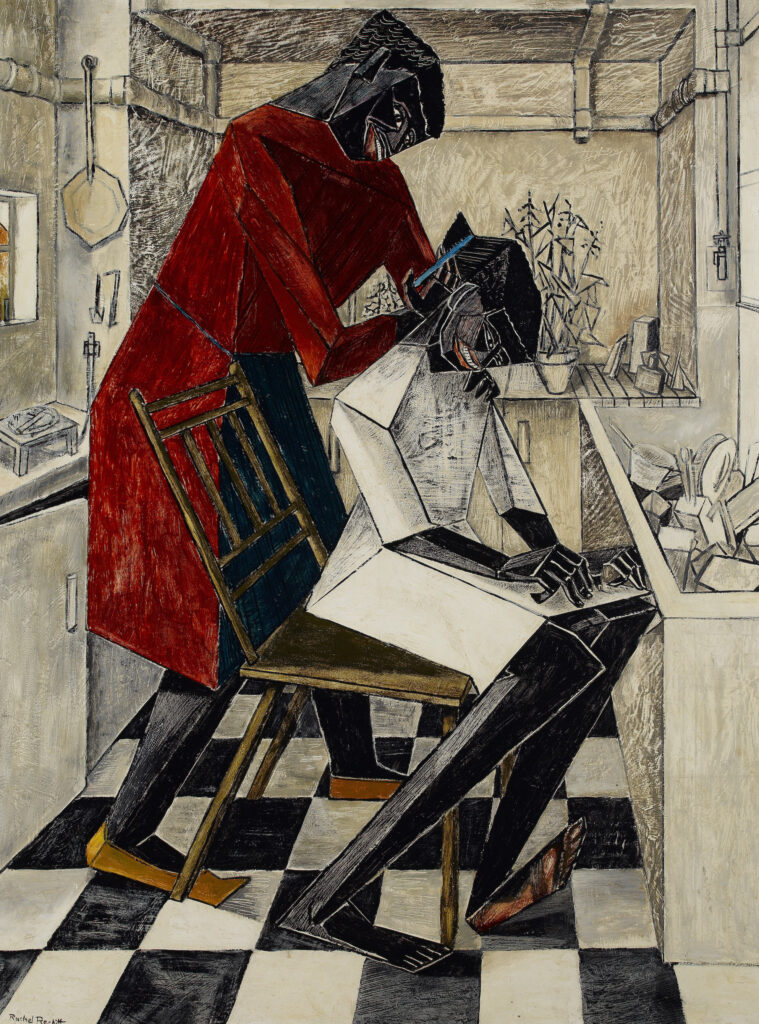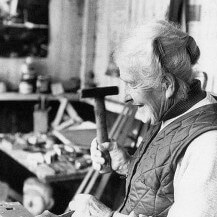Your currently viewing RAW Modern | Switch to RAW Contemporary
Girl Having Her Hair Combed, 1960
Catalogue essay by Blanche Llewellyn
This striking composition was painted around 1960 in the basement kitchen of a large house on the canal side near Regent’s Park, London. According to Reckitt, the model was a Nigerian student nurse. The painting is one of a series of conversation pieces that Rachel Reckitt undertook in the 1960’s, which included subjects such as boys on bicycles, queues at bakers and gossiping women in the street.
“The Maids” (Les Bonnes), a play by French dramatist Jean Genet, may have inspired “Girl Having her Hair Combed”. First performed in Paris in April 1947 at the Théâtre de l’Athénée, “The Maids” was based on a true story revolving around two sisters (Christine and Léa Papin), who worked as maids for the Lancelin family in Le Mans during the 1930s. In 1933 the mutilated bodies of Mme Lancelin and her daughter were discovered and the Papin sisters confessed to the crime. The murders stood out as one of the most publicized cases in French news history. Its extraordinary violence, coupled with motivation that was never wholly explained, made it a singular case: the sisters were characterised by some as bloodthirsty criminals, and by others as victims of bourgeois oppression; the enduring debate ignited division among philosophers, writers, and politicians.
Paula Rego’s ‘The Maids‘ (1987) bears a striking resemblance to Reckitt’s painting. Rego’s emphasis on an unnerving scene echoes the mood of Reckitt’s composition. In Rego’s artwork, ambiguity surrounds the question as to whether one maid is merely combing Madam’s hair or whether indeed she is poised to strangle her, adding to the sense of disquiet.

